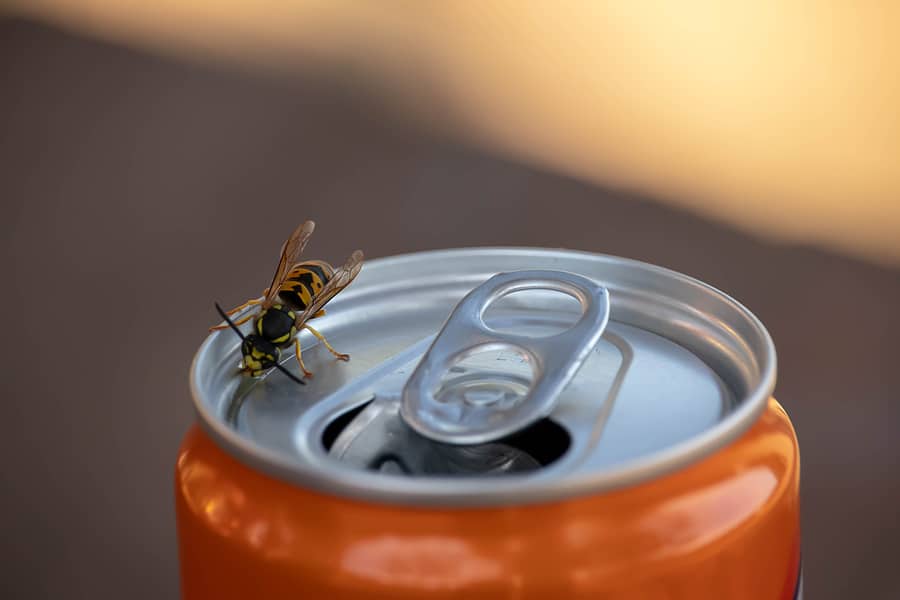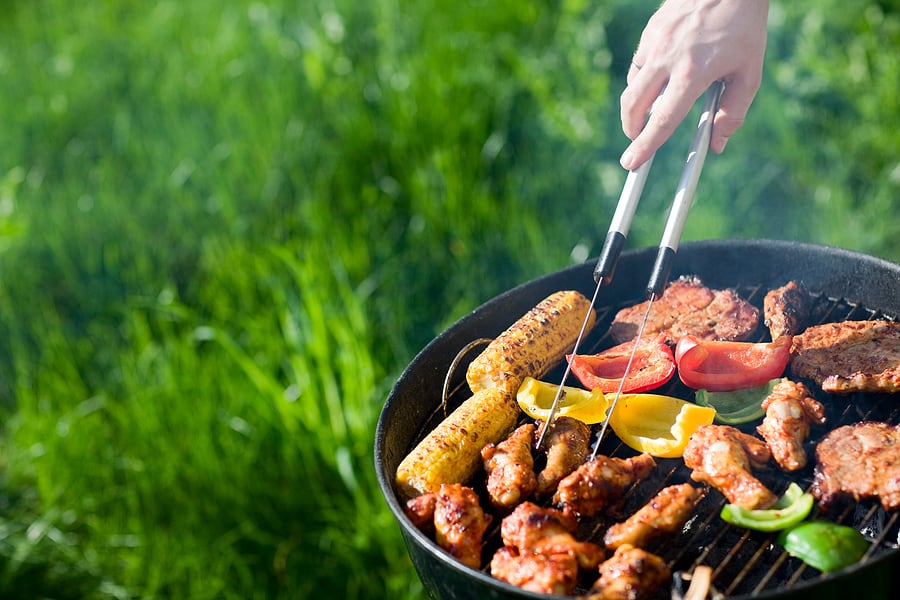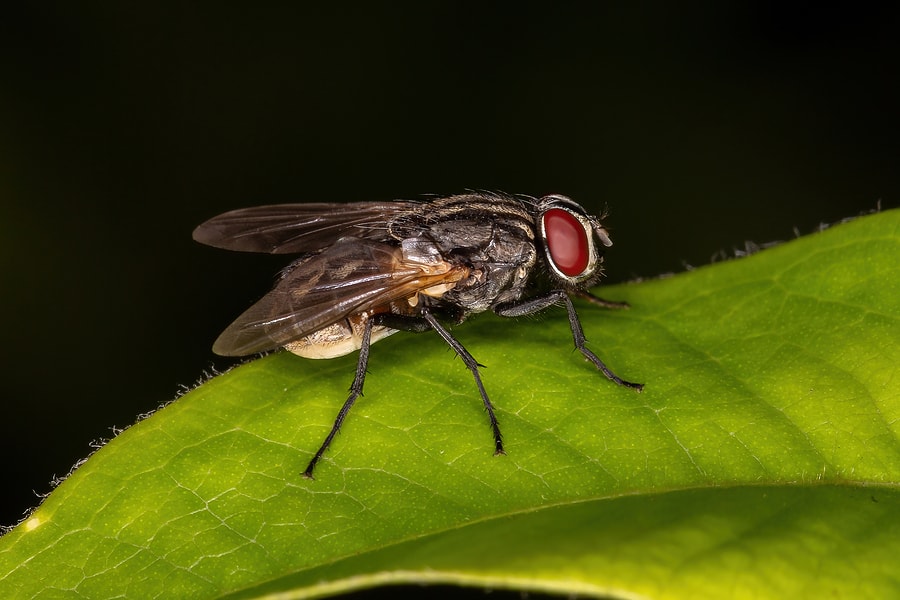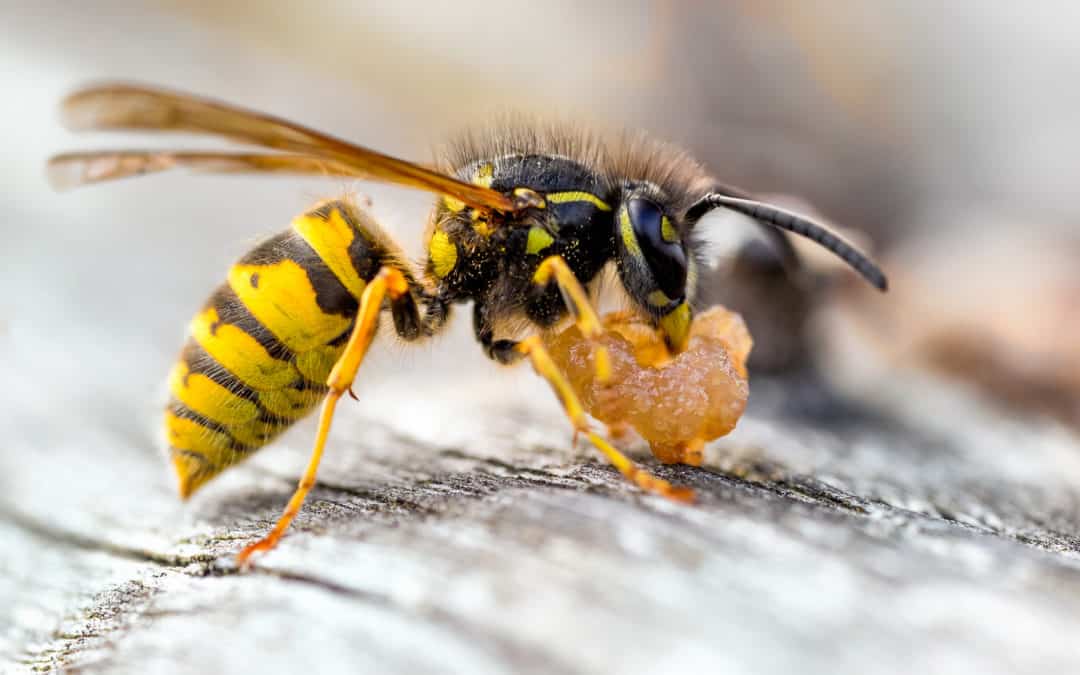READY TO GET STARTED?
REQUEST A FREE ESTIMATE
Fill out the form below or call (888) 466-7849 for a free, no-obligation estimate.

Spotting stinging pests around your business can be alarming. Yellowjackets, wasps, and hornets are all active during the warmer season as they go in search of a food source and a place to establish their colony. These pests can pose a serious health risk to your customers and business. We break down the most common stinging pests and the best ways to avoid them.
Wasps
Wasps will build their paper-like nests on eaves, porch ceilings, branches, and windowsills. These pests search for food during the summer months. They are highly attracted to any food found outdoors, along with anything with a fragrant smell such as candles or flowers. When threatened, these pests will sting multiple times and eventually call on reinforcements from other wasps by emitting pheromones.
Hornets
Hornet nests are built in hollow trees or the walls of buildings and attics. These pests are attracted to light and will often fly into open windows at night if they see a light. Hornets like to eat fruit and honeydew, causing them to congregate in areas where these foods are found. While they are non-aggressive near their nests, they will sting if they feel threatened. When stings occur, the stinger can get lodged in the skin.
Yellow Jackets
Yellowjackets are social insects and can be found wherever humans are. These pests like to eat sweets and proteins and will invade outdoor events to find these foods. Yellowjackets build their nests in high places, such as on trees and buildings, or on the ground. If they feel threatened, they will sting multiple times which can be extremely painful.
Stinging Pest Prevention for Your Business
If you have a problem with stinging pests, contact Commercial Services for an inspection and treatment plan.

Although cockroaches are considered a year-round pest, their populations swell in the summertime. Particularly in the southeast, roaches cause problems for both residential and commercial properties during these hot summer months. Cockroaches are hardy pests that are highly adaptable to a variety of conditions. They particularly thrive in warm, humid environments, which are readily available in the hot, muggy summer heat. Infestations are more likely in the summertime because this increase in temperature spurs them to feed and reproduce at a much faster rate. When the temperature gets too hot, even roaches that usually stay outdoors will make their way into your home or business in search of food, water, and shelter.
How can you prevent a cockroach infestation this summer? Check out these tips to prevent cockroaches from taking over your home.
Roaches will come indoors in search of food and water. Eliminating their food source is one way to discourage them from coming into your home. Don’t leave dirty dishes in the sink overnight; wash them and put them away after each meal. Clean up any crumbs or spills immediately. Wipe up any grease from the stovetop and other appliances. Seal food, including pet food, in airtight containers. Mop and vacuum on a regular basis. Don’t leave pet food or water out overnight. Take out the garbage before going to bed. Use garbage cans with tight fitting lids. Wipe out the trashcan regularly. Make sure to check behind cabinets and appliances for spills/crumbs. Roaches like these areas because of the warmth the appliances give off combined with the likelihood of spilled food.
Roaches hide out during the day so they will seek out dark, protected areas to hole up in until nightfall. Declutter your home and get rid of anything they can use for shelter. Roaches also love to breed in cardboard and newspaper. Recycle any old newspapers and get rid of unused cardboard boxes. Try to use plastic storage containers rather than cardboard boxes if possible.
Roaches are very creative when it comes to finding ways into your home. A good rule of thumb is if you can see daylight around a door or window, roaches can get in. Inspect at least once a year around windows and doors, along foundations and the roof, attic and crawlspace vents, and around holes used for electric, gas, and plumbing lines. Seal any cracks and holes you find. Use caulk to seal smaller holes, steel wool or foam for larger holes, and fine wire mesh on chimneys and attic vents.
Roaches (along with many other pests) are attracted to moisture because they need water to survive. Regularly inspect your home for any leaking faucets, sinks, or pipes and check refrigerators and appliances to make sure they aren’t producing excess moisture. Get any known leaks or plumbing issues fixed immediately.
Prevention can only get you so far when it comes to keeping roaches out. Nothing eliminates a pest as well as professional service. If you suspect you have a roach infestation, contact a pest control company who can thoroughly inspect your home to help identify which type of cockroach you are dealing with, help identify any potential areas where they are getting in, provide you with the most up-to-date elimination and control methods, and help you with a prevention plan going forward.
What Do Swarming Termites Mean?
How To Help Your Lawn During Late Summer

It’s officially barbeque season! Many of us are looking forward to getting together with family and friends during this warm weather for a backyard cookout. Unfortunately, we’re not the only ones who love our outside parties; summer pests are also likely to show up and ruin the fun! While it’s impossible to get rid of all pests outside, it is possible to reduce the chance of them crashing your party by taking a few precautions before your next backyard BBQ!
Prepare Before the Party
Before your party day arrives, put preventative measures in place to avoid pests. Check your doors and windows for any gaps or holes and secure them if needed. Check your yard for items that can hold water such as buckets or toys, which can act as a breeding ground for mosquitoes and empty or remove them.
Choose the Party Time Wisely
Many pests, like mosquitoes, are most active at dusk and dawn. If your party will take place before sunset, plan to have plenty of insect repellent on hand, especially those that contain DEET. Consider putting citronella candles outside near the party area where they can help minimize the presence of mosquitoes.
Secure the Food
Be prepared for pests to swarm the food and drinks you serve. Some pests, like ants, are looking for any food source such as fruit or sweets. Consider serving your food and drinks indoors and use your outdoor space for eating and entertaining. Try to keep your food in sealed containers when possible and, throughout the party, try to wipe and sweep up any food crumbs or spills to keep pests from infesting.
After the Party
As important as it is to prepare for a party, it’s equally important to clean up afterwards to keep pests from taking over your property afterward. Make sure you clean up any trash that’s been left behind, along with sweeping up crumbs and wiping spills. Wash dishes right after the party instead of letting them lay in the sink overnight. Make sure that you’ve placed your trash in sealed, tightly closed garbage containers outside of your house.
Preparing for a party can be stressful enough, but when pests become a problem they can definitely add to your stress. To ensure a pest-free party, consider calling your local pest control company who can provide you with an inspection and a treatment plan.

One thing we look forward to in the summer is warmer weather which lets us spend more time outdoors. Unfortunately for some, this also means summer pests come out full force to ruin your outdoor plans. Some of the most common summer pests are flies, ants, mosquitoes, roaches, gnats, ticks, rodents, and stinging insects like wasps and hornets.
There are five major reasons these pests become more prominent in the summer months. The first is temperature. The temperature outside can affect both the behavior and development of pests. Many of these creatures favor the warmer temps, increasing their activity. Other pests, however, will make their way into your home in an effort to escape the heat. Moisture also contributes to pests invading in the summer. Most pests need water to survive and will thrive in moist environments. The increased humidity and summer rain showers provide ideal conditions for pests to thrive during this season. During times of drought, they will make their way indoors in search of water.
Summer also means longer days and shorter nights. More daylight means more time for pests to stay active in their search for food. Food is another motivator for summer pest activity. Grass and other vegetation grows in abundance in the summer months, providing a literal feast for many pests. This also provides them with an ideal place to hide out. Finally, for many pests summer is one of the busiest seasons of their life cycle. They reproduce at a rapid rate during these months in order to grow their populations before the slow down of the winter months. Many also go in search of food to store away for their upcoming winter hibernation or brumation.
Summer pests don’t have to ruin your good times. Here are some Dos and Don’ts of summer pest control.
If you have a problem with pests this summer, contact your local pest control company who can evaluate your home, identify the type of pest you are dealing with, find how and where they are getting into your home, and provide you with the best treatment and prevention plan for your situation.
Watch Out for These Stinging Pests
Mosquito Control For Warmer Weather
The Summer Big Three: Roaches, Mosquitoes, & Termites

An encounter with a stinging pest can always be alarming, as they are known to have a painful sting. Since stinging pests are most active during the spring and summer, it’s important to know the most commons ones to look out for and how you can protect yourself and your family.
Social in nature, the yellowjacket can live in nests or colonies containing anywhere from 1,000 to 4,000 workers. Yellowjackets tend to build their nests on trees, buildings, and in the ground. Unlike bees, these insects have smooth stingers where they can sting several times if they start to feel threatened, which can be severely painful. These insects are highly attracted to sweet foods and proteins. If you plan on having a picnic or BBQ outside, make sure to keep your food covered tightly to eliminate the chance of attracting them.
Another popular stinging insect you should be aware of this spring and summer is the hornet. Hornets can sometimes be a benefit to homeowners as they can help control common household pests; although, they can quickly become a nuisance as they will often build nests throughout your property, such as in hollow trees, in the walls of houses and attics, and even in abandoned beehives. Like yellowjackets, these insects have smooth stingers. If stung by a hornet, the stinger can get lodged in the skin at the site of the sting. Hornets will eat tree sap, fruit, and honeydew. To prevent an encounter with these insects, keep both your food and garbage sealed in containers.
Known to build construction paper-like nests on branches, porch ceilings, eaves, and attic rafters, wasps can easily infest your entire property. These pests live in small colonies and like to eat nectar, along with common household pests such as flies and caterpillars. If these insects feel threatened or their nest is disturbed, they will sting multiple times. Their stings can be painful and often cause an allergic reaction. If you encounter hornets, don’t swat at them as this will only agitate them; instead calmly walk away and they generally will not follow.
If you’ve noticed these popular stinging insects around and inside your home, it’s best to reach out to your local pest control company to inspect and safely remove these insects.